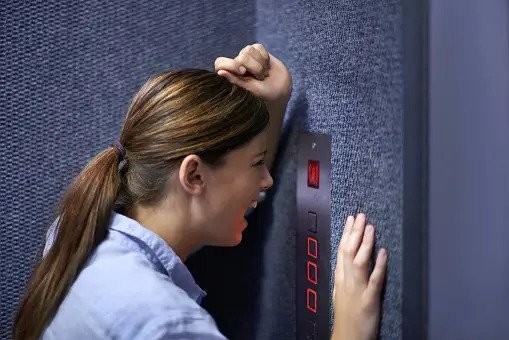Introduction
Ah, monsters! While most of us outgrow our fear of creepy creatures lurking under our beds or hiding in our closets, imagine carrying that sense of dread into adulthood. Ever heard of Teraphobia? It's not your run-of-the-mill jitters but a full-blown, deeply ingrained fear of monsters. In today's blog, we're delving into the nitty-gritty of Teraphobia, dissecting its symptoms, and serving up some tangible ways to deal with it. So, brace yourself for an enlightening read!
Teraphobia, a term derived from the Greek words "Teras," meaning monster, and "Phobos," meaning fear, is a specific phobia centred around an overwhelming and irrational fear of monsters. Often overlooked or dismissed as a childish quirk, this fear can, in fact, have serious ramifications on one's mental health. Keep reading as we go on a voyage through the eerie world of Teraphobia, understand its psychological aspects, and explore methods to keep this monstrous fear at bay.
What is Teraphobia?
When it comes to phobias, Teraphobia is something of an oddity. It is an acute psychological condition in which the individual experiences intense fear at the mere thought or image of monsters. Mind you, these aren't just the fantastical creatures you find in mythology or horror films; for some, the term 'monster' can represent a broader, more abstract concept, such as the "monsters" within us or even metaphorical monsters in society.
The roots of Teraphobia are usually traceable to early childhood experiences. Perhaps you were exposed to scary stories or movies at an impressionable age, and the imagery firmly planted itself in your psyche. Alternatively, the fear could stem from deeper, unresolved emotional or psychological issues. Indeed, Teraphobia often serves as a vessel for other fears, masking deeper anxieties or traumas that may require professional intervention.
To better illustrate the impact of this phobia, let's consider the case of Emily, a 30-year-old graphic designer. Emily had always been uncomfortable with any media involving monsters—so much so that even an innocuous, animated feature like "Monsters, Inc." could send her into a state of panic. Simple tasks like walking alone at night or even browsing through a book of fairy tales become Herculean challenges for her. After seeking help, it was revealed that her Teraphobia masked deeper fears stemming from her past, fears that could be tackled through therapy and medication.
So, as you can see, Teraphobia isn't just a phase or a quirky characteristic; it's a complex psychological issue that deserves attention and understanding.
The Psychology Behind Teraphobia
If you're scratching your head, wondering how someone could possibly be afraid of monsters, you're not alone. But here's the kicker: Phobias, in general, aren't born out of logic; they're psychological conditions often rooted in our subconscious. The human mind is a complex playground where fears and anxieties can take on lives of their own, thanks to a mishmash of factors like genetics, environment, and personal experiences.
So, what specifically sparks Teraphobia? As we touched upon earlier, early exposure to frightening images or stories of monsters can be a major trigger. Sometimes, however, Teraphobia serves as a mask for other underlying fears or even traumas. For instance, a traumatic event in childhood could manifest later in life as an irrational fear of monsters.
While there's a scarcity of research focusing solely on Teraphobia, studies in the broader field of anxiety disorders do shed light on the psychological mechanisms that contribute to specific phobias. Cognitive behavioral theories suggest that the way we perceive, think, or feel about a situation can aggravate a phobia.
Common Symptoms
Now that we've taken a bird's-eye view of the psychological backdrop, let's zero in on the signs that may indicate the presence of Teraphobia. Physically, you might experience symptoms like sweating bullets, a racing heartbeat, or even shaking like a leaf.
Psychologically, anxiety and dread rear their ugly heads, often out of the blue and disproportionately intense compared to the actual threat (or lack thereof). Emotionally, you may find yourself at your wit's end, feeling overwhelmed or even breaking down into tears.
What Triggers Teraphobia?
Buckle up, because this is where the rubber meets the road. You might wonder what situations could possibly trigger a fear of monsters in daily life. For those grappling with Teraphobia, triggers can range from the obvious to the subtle. Watching horror movies or reading folklore filled with menacing creatures could be direct triggers. Even common celebrations like Halloween, where monster costumes are all the rage, can be a stress-inducing affair.
Interestingly, the triggers can be age-specific. While children may develop Teraphobia from fairy tales or bedtime stories, adults might find triggers in more abstract forms, like societal or internal "monsters"—think issues like crime or personal failures.
Also Read: Causes and Symptoms of Emetophobia
Diagnosis
Rolling your eyes and brushing off Teraphobia could be a grave mistake. If you or someone you know is showing symptoms, timely intervention is crucial. Diagnosis usually involves consultations with psychologists or therapists, who employ various tools like questionnaires or interviews to understand the depth of the condition.
Sometimes, more specialized tests or evaluations may be required. Based on the diagnosis, a course of treatment is then tailored to the individual's needs. Ignoring the signs and delaying a professional diagnosis can lead to worsening symptoms and a poorer quality of life
Ways to Deal With Teraphobia
Fear not, for all is not lost! If you find yourself in the clutches of Teraphobia, there are multiple avenues for treatment and management to explore. Let's break it down:
Cognitive Behavioral Therapy (CBT)
CBT is the go-to treatment for many phobias, Teraphobia included. This form of therapy works by changing the negative thought patterns that fuel the phobia, replacing them with more rational and positive beliefs. It's like reprogramming your mind to react differently to the idea of monsters.
Exposure Therapy
Yes, it sounds counterintuitive. Why would you want to be exposed to the very thing that terrifies you? But hang on a minute—exposure therapy is a controlled method that gradually familiarizes you with the object of your fear, making it less terrifying over time. Think of it as dipping your toes into the water before taking the plunge.
Medication Options
In some cases, medication such as anti-anxiety meds may be prescribed to manage symptoms. However, it's worth noting that medication is generally not a long-term solution and is often used in conjunction with other treatments like CBT.
Self-Help Techniques
Apart from professional help, certain self-help techniques can also provide relief. Relaxation exercises, deep-breathing methods, and positive visualization can go a long way in managing immediate symptoms.
Real-Life Stories and Testimonies
Now, let's put a human face on this condition. Take Sarah, for example. She grappled with Teraphobia for years but managed to overcome it through a combination of CBT and exposure therapy. And let's not forget Tom, who realized the power of social support and therapy in conquering his fears. Their stories underscore the importance of reaching out, either to professionals or within your social circle, for effective coping mechanisms.
Conclusion
We've come to the end of our journey through the eerie labyrinth of Teraphobia. To recap: it's an irrational yet impactful fear of monsters, rooted in a variety of psychological and experiential factors. The symptoms can be as varied as they are debilitating, but help is at hand. Treatments like CBT, exposure therapy, and medication can offer a way out of this terrifying maze.
If you're battling Teraphobia—or any phobia, for that matter—don't suffer in silence. Help is out there; all you need to do is reach for it. After all, even the darkest clouds have a silver lining. So go ahead, and take that step toward reclaiming your peace of mind.



